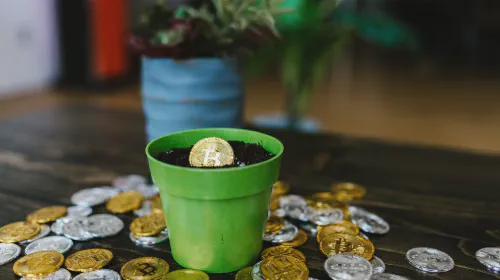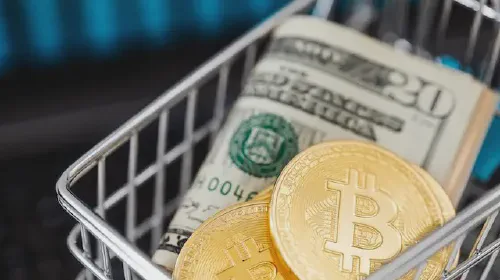In-App Payments: A Deep Dive
Salomon Kisters
Jun 15, 2023This post may contain affiliate links. If you use these links to buy something we may earn a commission. Thanks!
Mobile apps have revolutionized the way we interact with technology. With the advent of smartphones, people are more connected now than ever before. This communication has provided companies and businesses with a new platform to engage with their customers, and mobile applications are at the forefront of this new trend.
In addition to providing customers with useful and interactive experiences, mobile apps also offer a way for businesses to monetize their products and services. One way to achieve this is through in-app payments.
In-app payments are a powerful tool that enables businesses to offer their products and services directly to consumers within their applications. Essentially, in-app payments are transactions that occur within a mobile app and are part of the app’s user experience.
This means that users can complete transactions without being redirected to an external website or payment gateway. This seamless integration provides a frictionless experience for both users and businesses, something that is becoming increasingly important as more and more people use mobile devices to make purchases.
In this blog post, we’ll take a deep dive into in-app payments, explain how they work, and explore their benefits for both businesses and consumers. We’ll also look at the various mechanisms that are used to implement in-app payments, as well as the security considerations that come with this technology.
So, buckle up and get ready to learn about one of the most exciting developments in the world of mobile applications.
Setting up In-App Payments
If you’re a business looking to monetize your mobile application, in-app payments are an attractive option. But before you can start offering this service to your customers, there are a few things you need to know.
Firstly, you need to consider which payment gateway you want to use. This will depend on a variety of factors, such as the types of payments you want to accept, which countries you operate in, and the fees charged by the gateway provider. Some popular options include PayPal, Stripe, and Braintree.
Once you’ve chosen your payment gateway, you’ll need to integrate it into your app. This can be a complex process, as it involves setting up secure connections between your app, server, and payment gateway. You’ll also need to ensure that your app complies with any relevant regulations, such as PCI DSS.
Another important consideration is how you’ll handle refunds and chargebacks. These can be complex processes that involve multiple parties, so it’s important to have a clear policy in place before you start accepting payments. You’ll also need to ensure that your app provides clear and transparent information to users about payments and refunds.
Finally, it’s important to consider the user experience. In-app payments should be as seamless and frictionless as possible, to ensure that users feel confident and secure when making transactions. This means providing clear and concise information about payment options, as well as ensuring that the payment process is fast, reliable, and secure.
Preventing Fraudulent Transactions
When setting up in-app payments, it’s important to take steps to prevent fraudulent transactions. Fraudulent transactions can be costly and damaging to your business, so it’s important to use best practices to reduce the risk of fraud.
Here are some best practices to consider:
Use fraud detection tools: Many payment gateways offer fraud detection tools that can help detect and prevent fraudulent transactions. These tools use machine learning algorithms to analyze transaction data and identify patterns that may indicate fraud. Consider using these tools to reduce the risk of fraud.
Set transaction limits: Another way to reduce the risk of fraud is to set transaction limits. This can help prevent fraudsters from making large transactions that are outside the norm. Consider setting transaction limits for certain types of transactions or for certain users.
Use two-factor authentication: Two-factor authentication can add an extra layer of security to your in-app payments. With two-factor authentication, users are required to provide two forms of identification, such as a password and a security code. This can help prevent unauthorized access to user accounts and reduce the risk of fraud.
Monitor transactions: Keep an eye on your app’s transactions and look for any unusual activity. This can help you identify and prevent fraudulent transactions. Consider using a payment gateway that provides real-time transaction monitoring and alerts.
Educate your users: Provide your users with clear information about how payments work in your app. This can help them understand what to expect and reduce the risk of misunderstandings that can lead to fraudulent transactions. You can also provide tips for protecting their accounts and avoiding fraud.
If you use these best practices, you can reduce the risk of fraudulent transactions when setting up in-app payments. This can help protect your business and provide your users with a more secure and reliable payment experience.
Maximizing Revenue
In-app payments can be a great way to generate revenue for your business. However, simply offering in-app purchases may not be enough to maximize your earnings. To truly take advantage of this monetization strategy, consider incorporating upsells and cross-sells into your in-app payment system.
Upsells are offers to upgrade a user’s purchase to a more expensive or feature-rich version of the product. For example, if a user is purchasing a monthly subscription to a video streaming service, you could offer an upsell for an annual subscription at a discounted rate.
Cross-sells, on the other hand, are offers for related or complementary products that the user may be interested in purchasing. For instance, if a user is buying a smartphone case, you could cross-sell them a screen protector or charger.
By implementing upsells and cross-sells, you can increase the average order value and overall revenue for your business. To do this effectively, it’s important to analyze user behavior and identify the best opportunities for these offers. Some ways to do this include:
Analyzing purchase history: Look at what users have bought in the past to identify possible cross-sell opportunities. If a user has bought a particular type of product before, they may be more likely to purchase related products in the future.
Offering relevant upgrades: When offering upsells, make sure they are relevant to the user and add value to their original purchase. If the upsell is too expensive or not relevant, it may turn the user off from purchasing altogether.
Timing the offer: When offering upsells and cross-sells, timing is everything. Offering the offer too early may overwhelm the user, while offering it too late may result in them already deciding to leave the app. Test different timings to see what works best for your users.
In short, incorporating upsells and cross-sells into your in-app payment system can be a valuable way to maximize revenue and provide users with a better overall shopping experience.
Streamlining Checkout Flow
In addition to incorporating upsells and cross-sells into your in-app payment system, streamlining the checkout flow can also have a significant impact on conversion rates. One of the main reasons users abandon their purchase is due to a complicated, frustrating, or long checkout process.
To make sure your checkout process is streamlined, consider implementing a few key strategies:
Simplify the form: Keep the checkout form as concise as possible by only asking for essential information. Avoid asking for unnecessary personal details or making the user create an account before making a purchase.
Use autofill: Making use of autofill can reduce the user’s effort and time, making the process faster. This can be especially helpful when it comes to filling in personal information like name or address.
Provide multiple payment options: Give users the choice to pay in the way they like. Offer multiple payment options, like a credit card, PayPal, or even cryptocurrency, to cater to different preferences and optimize the payment experience.
Optimize mobile checkout: Almost 70% of eCommerce transactions take place on mobile, so optimizing your checkout for mobile can be crucial. Make sure your checkout is mobile-responsive, easy to use, and fast.
The Future of In-App Payments
In-app payments have already revolutionized the way we make purchases within apps and games. With the advancement of technology, we can expect more changes and enhancements to the in-app payment system.
One of the biggest trends we can see is the rise of mobile wallets. With the growth of digital currencies, mobile wallets are becoming more popular than ever. Mobile wallets allow users to store their payment information securely and make purchases with just a few taps on their phones. As they become more popular, we can expect to see more apps and games integrating mobile wallets into their payment systems.
Another trend we can predict is the use of biometric authentication. Biometrics, such as facial recognition and fingerprint scanning, are becoming more commonplace in smartphones. Using biometrics for payments can increase security and make payments more seamless, as users won’t need to remember passwords or enter their payment details manually.
Augmented reality (AR) and virtual reality (VR) are also likely to impact the in-app payment industry. As AR and VR technology advances, we can expect to see more immersive shopping experiences within apps. This could include virtual storefronts or personalized product recommendations based on user preferences.
The future of in-app payments is exciting and promising. With these trends and predictions, we can expect to see more secure, innovative, and convenient ways of making purchases within apps and games.
Conclusion
In-app payments should be an integral part of your monetization strategy. In-app payments not only provide a convenient and seamless purchasing experience for your users, but they also offer significant revenue potential.
In short, in-app payments can be a game-changer for your mobile app or game. By taking advantage of the latest trends and innovations in payment technology, you can create a more engaging and lucrative monetization strategy that benefits both your users and your business.
Stay informed with the latest insights in Crypto, Blockchain, and Cyber-Security! Subscribe to our newsletter now to receive exclusive updates, expert analyses, and current developments directly to your inbox. Don't miss the opportunity to expand your knowledge and stay up-to-date.
Love what you're reading? Subscribe for top stories in Crypto, Blockchain, and Cyber-Security. Stay informed with exclusive updates.
Please note that the Content may have been generated with the Help of AI. The editorial content of OriginStamp AG does not constitute a recommendation for investment or purchase advice. In principle, an investment can also lead to a total loss. Therefore, please seek advice before making an investment decision.

Does Dogecoin Coin Have Utility?
Dogecoin came into being in 2009 with the launch of the first decentralized blockchain, but does it have any utility?

DeFi Tokens vs. Coins - What is the Difference?
DeFi is everywhere. But what are DeFi tokens, and how are they different from coins?

Reasons why Bitcoin can become a means of payment in the future - SEO expert insights
Insights into why Bitcoin can become a significant means of payment in the future, including legal tender status, use in unstable economies, Lightning Network advantages, and regulatory developments.
Protect your documents
Your gateway to unforgeable data. Imprint the authenticity of your information with our blockchain timestamp